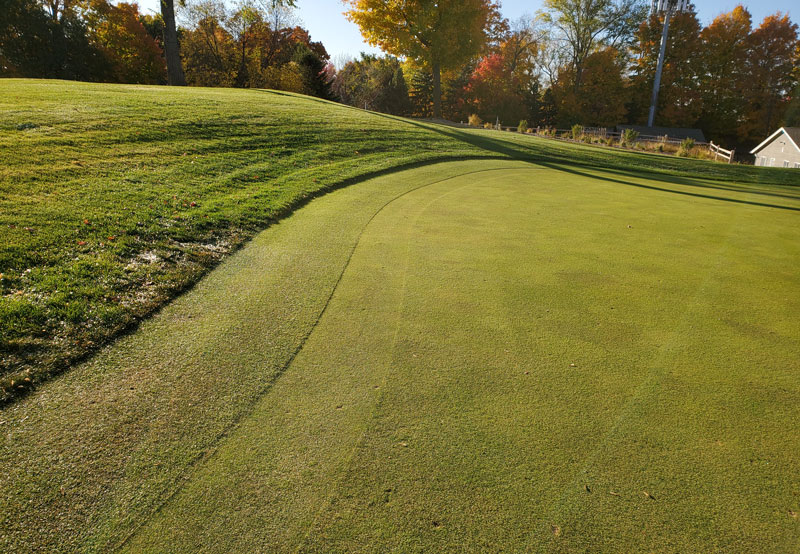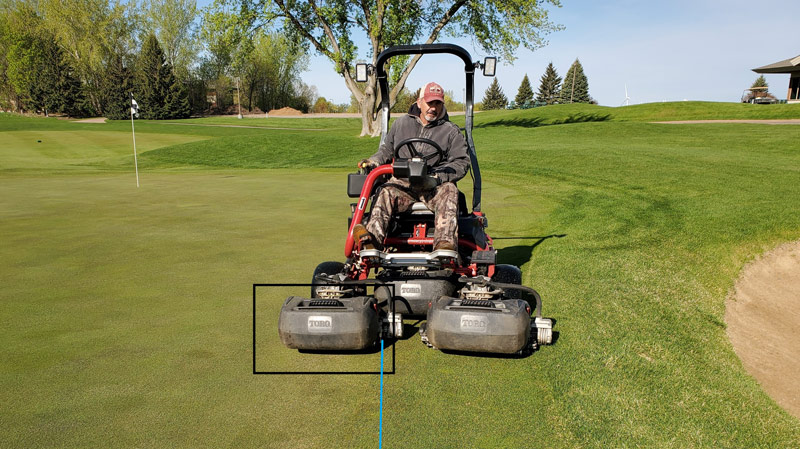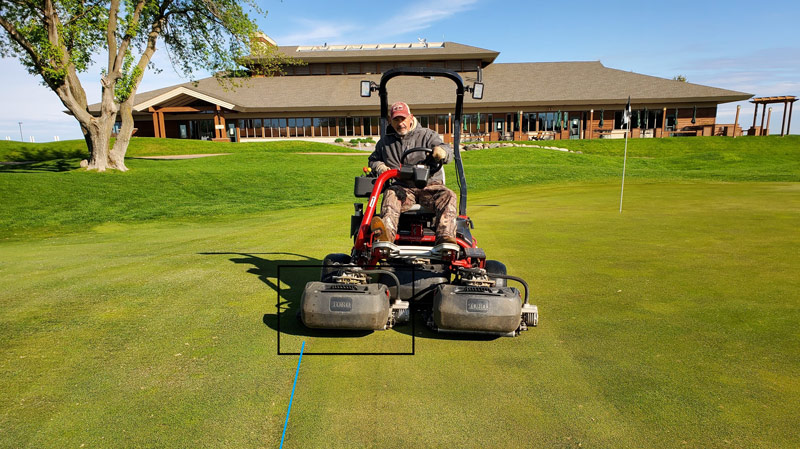
Collar craftsmanship: Pulling off the once-challenging feature has become routine at The Wilds Golf Club, regardless of who’s operating the mower, and no turf paint required. The 18-hole course near Minneapolis features Penncross creeping bentgrass on its greens and collars. Photos by Joe Berggren
As golf course superintendents, over-analyzing tends to be in our blood. “Cost per acre” this, “clip rate” that. The object of our over-analyzation may differ depending on where we work and what our facility prioritizes, but often, such fixations are just our own personal pet peeves.
My pet peeve is having consistent, flawless collars, and here at The Wilds Golf Club in Prior Lake, Minn., this effort to perfect our collars is a focus of morning greens inspection and was once a common gripe in our maintenance department meetings.
The perfect collar is indeed a pursuit for many superintendents, and we’ve deployed many tactics to try to achieve it. Some superintendents have a specific employee who has the knowledge and skill to do the perfect cleanup lap. Mastering this can take time and can be hard for some operators. (And it’s always a very sad day when that “King of the Cleanup” moves on to another job.)
Some superintendents use a guide on the mower. I’ve seen a stick mounted to the bucket with a spring hanging down to designate the line between the rough and the fine turf. Some superintendents use a specific number of passes, though this can be all too subjective to each operator. A common way to mark collars for mowers is by using turf paint. I’ve tried this strategy, and I didn’t realize I’d basically become a golf course graffiti artist until a former employee who was playing the course jokingly texted me about the excessive number of blue dots on the collars.
For the past two seasons at The Wilds, we’ve been using an idea I’d been kicking around in the back of my brain for a few years.

Consistency? Check. All collars are identical in width at The Wilds GC.
We typically mow greens five days a week, and Wednesday is the one day we do a complete green cleanup. Any other day that we mow greens, we either don’t do a cleanup or we do a partial cleanup where the operator stays 2 to 8 inches inside the edge where the green meets the collar. We apply high rates of plant growth regulators on greens and collars, so the growth usually isn’t noticeable to golfers between mows.
Wednesday green cleanup ties in with our technique for achieving the perfect collar. For this process, we take one of the side reels off the collar and approach mower — we use the Toro Greensmaster 3320 TriFlex hybrid mower — and replace that reel with a greens reel. With the new quick-attach reels, this switch is much easier than in the past and takes us no more than five minutes. This leaves the mower with two reels set at .375 inch (collar height) and one set at .125 inch (green height).
The operator needs to mow collars in the same direction on all greens. By doing this, they are mowing the collar at .375 inch with the two outside reels and doing the green cleanup at .125 inch with the inside reel (Figure 1, below).

Figure 1. The blue line shows the separation between green (left) and collar (right). The operator has the lower-set reel (in the box) on the green for cleanup while the two higher-set reels are mowing the collar.
The question you’re about to ask is, “How do you mow the front of the green?” The easy answer: Mow the other direction.
So, the operator first mows the collar in one direction, during which time the reel at the lower setting is inside the green and the reels at the higher setting are outside the green, on the collar (Figure 1). When they reach the front of the green, the operator picks up the reels and travels back to where they started, this time positioning the mower in the opposite direction and entirely on the green. They then mow the front of the green with the reel at the lower setting positioned along the inside edge of the green (Figure 2, below). While the entire machine is inside the green for this second step, the higher-set reels don’t have any influence going in this direction. This change of direction amounts to a traditional cleanup lap.

Figure 2. The operator now has the entire machine on the green. The lower-set reel (in the box) is moving along the edge (blue line) that separates the approach (left) from the inside of the green (right).
This method has made our collars perfect. The process of switching out the reels is quick, and the amount of any additional mow time is negligible. We’re able to carry out this routine on all 18 greens in an hour to an hour and a half. There is some adaptability to this method as well — if you desire smaller collars, replace two reels with greens reels.
It’s still essential to have a well-trained operator on the machine, but we’ve found these simple mowing modifications keep collar width consistent despite any variation in operators’ skill or vision.
With collars crossed off the list, golf course superintendents can now move on to overthinking more important things, like stake placement, ropes and signage.
Joe Berggren is the GCSAA Class A superintendent at The Wilds Golf Club in Prior Lake, Minn., where he has worked for four years. An 11-year member of GCSAA, Berggren earned an associate degree from Penn State University and a turf certificate from Rutgers University.